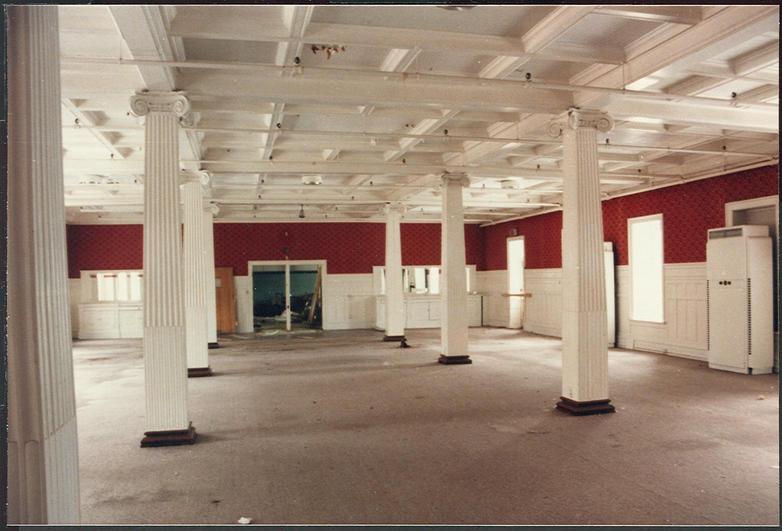

Unlike today’s well-padded vibrating recliners, Kellogg’s version consisted of a plain wooden chair that shook up to 60 times a second, with the apparent goal of stimulating the bowels. But Kellogg also had his mechanical misfires, one of which was the vibrating chair. President Calvin Coolidge had one of the doctor’s mechanical horses in the White House, and by some accounts, there was another in the Titanic’s first-class gym. Kellogg devised countless contraptions for exercise and other purposes. The book "The Battle Creek Sanitarium System" also shows images of vibrotherapy procedures, including a vibrating chair. Kellogg claimed these “sinusoidal current” treatments were painless and wrote that he’d tested them in “many thousands of therapeutic applications.” While electrical stimulation is used to this day for certain medical purposes, the ever-optimistic Kellogg maintained that it could treat lead poisoning, tuberculosis, obesity and, when applied directly to the patient’s eyeballs, a variety of vision disorders. With a device he cobbled together from telephone parts, he began to administer mild doses of electrical current directly to his patients’ skin. Kellogg’s interest in the therapeutic powers of electricity didn’t end with light baths. Kellogg prescribed light treatments for an astonishing range of ailments, including diabetes, insomnia, gangrene, syphilis-and even writer’s cramp. Kellogg, however, promoted light therapy as an almost universal cure-all and built what he called the world’s first “electric light bath”-basically a wooden cabinet lined with light bulbs, in which the patient could either sit or lie down. Some of that work, such as using light to treat depression, became an accepted practice. Like other physicians of his day, Kellogg experimented with the therapeutic effects of artificial light.

Two women laying on tables receiving artificial sun light treatment at the Kellogg's Battle Creek Sanitarium, circa 1924.

(Warning: This is going to get pretty gross.) Some of his ideas, particularly on nutrition and exercise, have proved remarkably prescient others now seem goofy or even barbaric. And he seemed willing to try anything to cure his patients’ ills, experimenting with countless treatments and inventing dozens of his own. Kellogg practiced much of what he preached-he was an avid vegetarian and reportedly celibate in his own four-decade marriage. Also among his patients was Ida Tarbell, the foremost investigative reporter of her day and a woman unlikely to let a charlatan go unexposed, let alone be personally treated by one. presidents, Thomas Edison, Henry Ford, Amelia Earhart, Sojourner Truth and many others. Kellogg also lectured, wrote books and edited a magazine, becoming a celebrity doctor whose admirers and patients included several U.S. Kellogg and his brother Will, the Battle Creek Sanitarium grew from the church’s small “health reform institute” into a national holistic wellness destination-a combination medical center, spa and grand hotel. John Kellogg’s granola was originally served as a medicinal food at his Battle Creek Sanitarium. But while he published in respected medical journals, lectured at prestigious universities and kept up with medical research that interested him, his treatments remained largely grounded in his religion’s tenets of dietary and sexual abstinence-much of which had come to the founder in visions and prophesies.ĭid you know? As a progenitor of the cereal product that would eventually be eaten by millions, Dr. In reality, Kellogg was a more complicated figure: a widely respected physician and popular wellness guru who had many forward-thinking treatment ideas-and many that now appear downright wacky.Īs one of the nation's first proponents of integral medicine, he saw himself as a health reformer fighting to improve body, mind and soul through a program he called “biologic living.” His messianic zeal for wellness stemmed largely from his Seventh-day Adventist faith groomed by the faith’s founders to be a church leader from a young age, Kellogg went on to earn his medical degree with their support.
BATTLE CREEK SANITARIUM MOVIE
Coraghessan Boyle’s 1993 novel The Road to Wellville and the movie of the same name, with Anthony Hopkins as the good doctor. Since his death in 1943, Kellogg has gained a reputation as something of a comical quack-due, in part, to his portrayal in T.


 0 kommentar(er)
0 kommentar(er)
